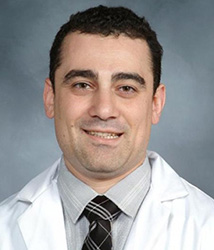- UroToday Home

- Center Of Excellence
Centers of Excellence
Localized Prostate Cancer
Nomenclature Matters: What Should the Future Be for Gleason Grade Group 1?
The term “cancer” dates to the time of Hippocrates, when the crab (karkinos)-like cutaneous manifestations of advanced tumors heralded incurable disease, pain, decline, and death. Today the term denotes an incredibly diverse spectrum of conditions, all characterized by abnormal cell division and growth—and nearly all by the capacity for metastasis—but varying very widely in aggressiveness and kinetics of progression. In the era of microscopy and histopathology, each cancer now has its formal criteria for diagnosis, and clinicians recognize the variable meaning of each. To the public, however, the connotation of the diagnosis “You have cancer” has changed only to an extent in the modern age.
In the case of prostate cancer, prostate specific antigen (PSA)-based early detection and the years-to-decades lead time associated with screening has radically changed the clinical meaning of the diagnosis. Countless research articles and reviews on prostate cancer begin by citing the fact that it is the most common non-cutaneous cancer diagnosed among men in the US and in many other countries.

Matthew R. Cooperberg, MD, MPH graduated from Dartmouth College, where he finished summa cum laude with a major in English. He earned his MD and MPH degrees at Yale University and completed residency in Urology and fellowship in Urologic Oncology at UCSF. At the end of his training, Dr. Cooperberg joined the faculty at UCSF, where he maintains busy clinical practices at the UCSF Helen Diller Family Comprehensive Cancer Center and the San Francisco VA Medical Center. He also holds a secondary appointment in the Department of Epidemiology & Biostatistics. He is actively engaged in research approaching the challenges of prostate cancer from many interrelated angles, from molecular analyses to health system-wide research. He has written or contributed to over 350 research articles. Early in 2013 Dr. Cooperberg co-authored a proposal for a national urology registry which served as the basis for the AUA Quality (AQUA) Registry, a project for which he now serves as Senior Physician Advisor. In 2015 he won the AUA Gold Cystoscope Award, and in 2016 was awarded his first R01 grant as Principal Investigator from the National Cancer Institute, to develop and validate novel miRNA-based biomarker signatures for refined prostate cancer prognosis. He lives in San Francisco with his wife, Jacqueline Dolev (a derm-atologist and fellow Yale Medical School alum), where they work primarily to keep up with their children, Jake and Sarah.


A Journal Club for Patients with Prostate Cancer
Introduction
The last decade has seen an increased uptake of the robotic-assisted laparoscopic approach for radical prostatectomies. Despite the negative results of the only published phase III randomized clinical trial comparing robotic-assisted laparoscopic to open radical prostatectomy, which demonstrated no significant differences in short- and medium-term functional outcomes between the two approaches,1 it is currently estimated that more than 70% of radical prostatectomy surgeries performed since 2012 in the United States have been with robotic assistance.2 In 2018, it was estimated that 92.6% of all radical prostatectomies in England were performed using this minimally invasive technique.3 Read MoreAcross all aspects of daily life, artificial intelligence more than ever is harnessing the power of machine learning to automate and improve the efficiency of tasks. This is also true in medicine and, in particular, in the field of prostate cancer. The concept of artificial intelligence began in the 1950s with the prime objective of emulating the cognitive capabilities of human beings in machines. More specifically, artificial intelligence is the ability of a machine to independently replicate intellectual processes typical of human cognition. Machine learning comprises algorithms that parse data, learn from that data, and then apply what they have learned to make informed decisions. Deep learning is a form of machine learning that is inspired by the structure of the human brain and is particularly effective in feature detection:1
Read MoreExternal beam radiotherapy, along with radical prostatectomy, has been a mainstay treatment option for prostate cancer for decades and is currently recommended by numerous guidelines for the treatment of intermediate- and high-risk disease.1-3 Unlike surgery which is often, at least initially, planned as a monotherapy, many patients who opt for external beam radiotherapy will receive concurrent therapy. This center of excellence article will review the evidence for concurrent systemic therapy with radiotherapy in men with localized and locally advanced disease.
Read MoreExternal beam radiotherapy, along with radical prostatectomy, has been a mainstay treatment option for prostate cancer and is currently recommended by numerous guidelines for the treatment of intermediate- and high-risk disease.1-3 While external beam radiotherapy has been foundational in prostate cancer treatment for decades, there have been significant changes in the delivery of radiotherapy, corresponding to technical advances.
Read MoreActive Surveillance Background
Prostate cancer represents a public health dilemma: while prostate cancer is the second leading cause of death among men in the US1 and third in Canada,2 it is widely over-diagnosed and over-treated, leading to significant patient anxiety and morbidity.3 Much of the over-diagnosis of prostate cancer relates to the use of serum prostate-specific antigen (PSA) testing for prostate cancer screening, beginning in 1987.4 Read More
Over the nearly two years of navigating the COVID pandemic, urology practices were forced to increase their efficiency by focusing on streamlining patient visits without sacrificing care quality. However, postponed checkups were unavoidable as the public was encouraged to stay home. According to the Centers for Disease Control and Prevention (CDC), 40% of Americans in 2020 delayed or avoided medical care due to pandemic-related concerns. Although necessary, we are now facing the severe consequences of delayed diagnosis and prostate cancer seems to be leading the way.
Read More
(UroToday.com) The 2022 Advanced Prostate Cancer Consensus Conference (APCCC) Hybrid Meeting included a session on biochemical recurrence, and a presentation by Dr. Felix Feng discussing how treatment can be individualized by using genomic classifiers. Dr. Feng started by highlighting that genomic biomarkers are included in certain treatment
Read MoreThe 2021 ASTRO Meeting included a session on biomarkers and salvage radiotherapy and discussion by Dr. Alan Dal Pra regarding the performance of a genomic classifier within a phase 3 randomized trial of dose escalated salvage radiotherapy after radical prostatectomy.
Read MoreThe 2021 ASTRO Meeting included a session on biomarkers and salvage radiotherapy and discussion by Dr. Paul Nguyen regarding the validation of a 22-gene genomic classifier in the NRG Oncology/RTOG 9202, 9413, and 9902 phase III randomized trials.
Read MoreThe 2021 ASTRO Meeting’s included a session on biomarkers and salvage radiotherapy and a discussant presentation of five presentations in this session by Dr. Brian Baumann. With regards to organizing these five presentations into clinical context, Dr. Baumann highlighted the SAKK 09/10 trial, a phase I trial of neoadjuvant stereotactic body radiotherapy, biomarker studies
Read MoreRead More
























